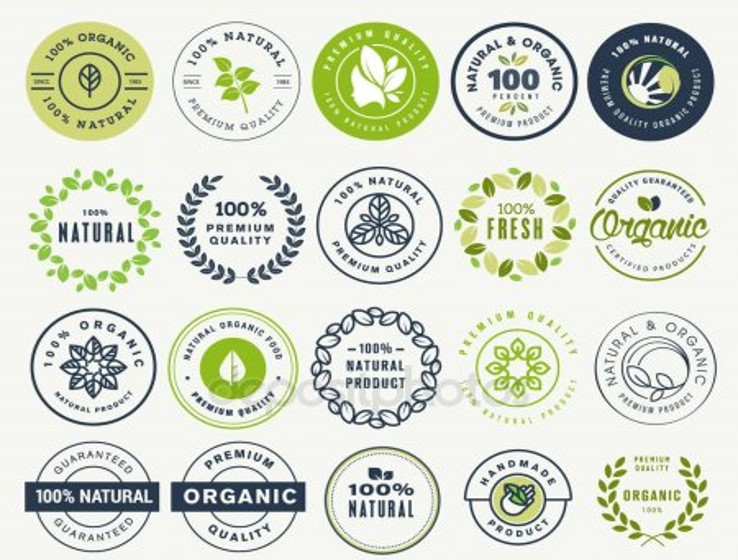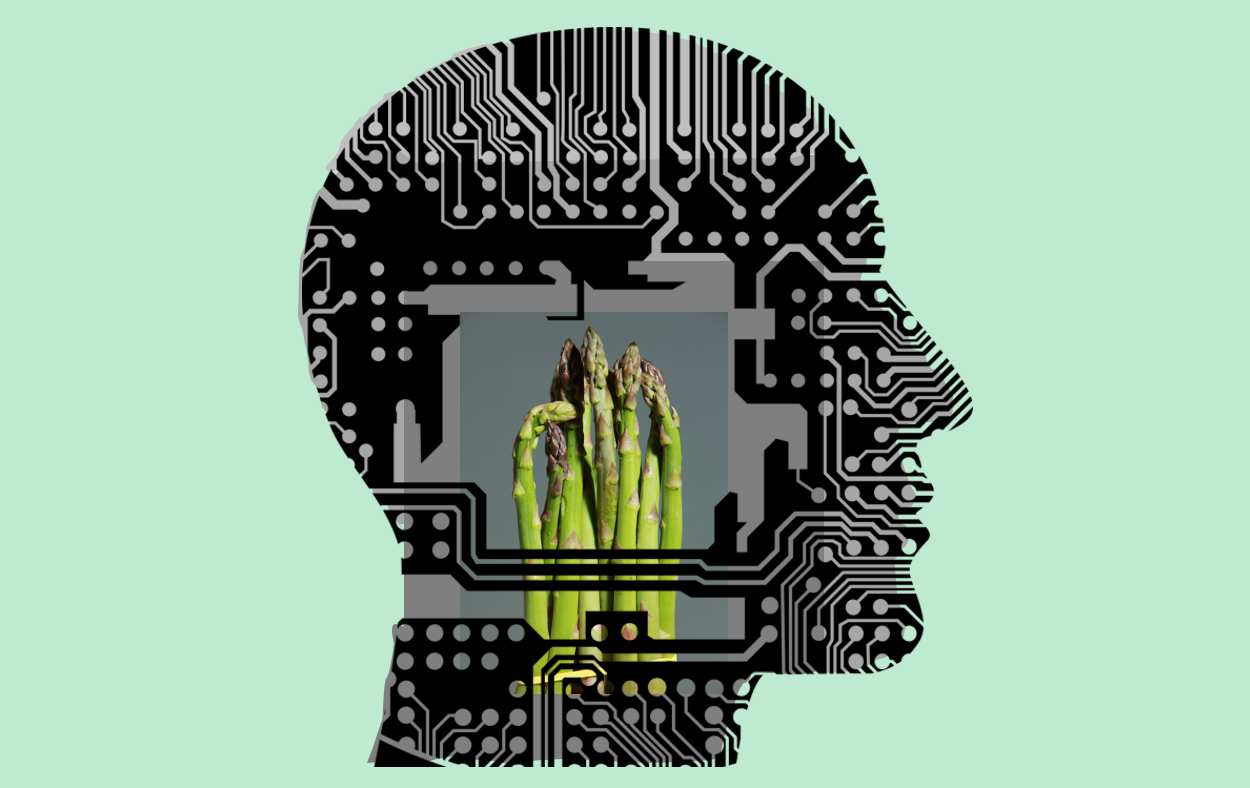If given the chance, which of these two bottles of water would you choose?

If you chose the one labeled “natural”, you’re not alone. Labeling a product as “natural”, “organic” or even “alternative” has become code for “healthy” or at least healthier compared to other, non-natural products. But is this really true, or is it just a way to sell products?
We have covered the term “organic” before. Organic has a very specific meaning in terms of food, legally speaking. However, despite what many people may think, organic food is not healthier than non-organic food, it is not pesticide free, nor is it better for the environment. The power of the label “organic” has been recognized to the point that the USDA felt it necessary to define exactly what it means, thereby preventing everyone from using the term and rendering it meaningless. This hasn’t stopped the misconception that organic equals healthy, however, and numerous companies use this to their advantage in their advertising.
Another successful marketing buzzword is “natural”. The USDA defines “natural” food as food that does not contain artificial ingredients. However, they are pretty lenient with what constitutes an artificial ingredient. Things like antibiotics and growth hormones are allowed, as is some degree of processing. While some may think, based on the labeling above, that the “natural” spring water is healthier than the regular water, the truth is that there is absolutely no difference between these products. Water is water, and all water contains electrolytes. It is certainly possible to synthesize water, but no one would ever do this at a commercial scale – it would be prohibitively expensive. The water in both bottles came from the ground, and while there may be slight differences in their mineral content, they are both equally “natural” and healthy. Some companies have taken things a step further and marketed “raw water”, which is completely untreated or processed. While this may sound to some to be a “healthier” option, it actually much worse for you, because while it is nutritionally the same (water is water), it carries a risk of disease carrying micro-organisms that the filtered or processed waters above do not.

The success of “organic” or “natural” products stems from chemphobia, or the fear of chemicals. Just the word “chemical” has a negative connotation for many – something that is synthetic, un-natural, or even dangerous. Advertisers use this to their advantage. In addition to natural and organic, they use words such as “gluten-free”, “GMO-free”, “alternative” or “homeopathic” to suggest their products are somehow healthier then “regular” products.
We have highlighted a couple of these misleading add campaigns in the past. PUR water filters ran a series of ads playing on people’s fear of lead in their water, arguing that their product made water “safer” by lowering lead levels below those considered safe by federal regulations. This was a particularly cynical ad to run during the Flint water crisis, in which thousands of people were exposed to high lead levels in their drinking water due to a combination of government corruption seemingly willful ignorance.
Stonyfield yogurt ran a series of ads using kids to sell their organic yogurt by calling GMO foods “monstrous” and using the “fish-tomato” as an example when it has nothing at all to do with GMO food safety or their product. The Stonyfield products are verified GMO-free, but they are only labeled as “organic”, and not “100% organic”, which means that up to 5% of the ingredients in their products can be non-organic, something that Stonyfield doesn’t feel it necessary to address in their ad campaign.

The non-GMO project verification is touted by Stonyfield and others as proof that their products are somehow healthier than others, but consumers need to be aware that this is not necessarily the case. Some companies selling products for which there is literally no possibility of using GMO ingredients, such as bottled water or coffee, have paid to have the non-GMO certification label added to their products. Since GMO water, tomatoes, and coffee do not exist (nor do GMO blueberries, apples, or oranges), the only reason to pay to add such a label to your product is marketing. These companies are trying to win customers by making their products seem healthier or safer when they are not. There is no data suggesting that non-GMO foods are any healthier or safer than GMO foods.

The gluten free label is one of the most abused, since the absence of gluten from the diet is not inherently healthy (unless you have celiac’s disease), and some products labeled as “gluten free”, like water – would never, under any circumstances have gluten in them. The term is used so often because people respond to it, equating gluten free with a healthy choice, even when it is not.
Let’s be clear – just like “organic”, “GMO-free”, and “gluten-free” products, “natural”, “alternative” and “homeopathic” products offer no health advantage over other similar products labeled otherwise. Just like water is water, a chemical is a chemical whether it comes from “natural” or an unnamed commercial sources. They are chemicals either way – everything you eat is a chemical, and you are made of chemicals. Advertisers are taking advantage of consumers by using these labels, and the confusion they create by suggesting over and over again in their ads that “natural” is healthier makes it very difficult for science-advocacy groups and blogs (like UYBFS) to counter popular opinion.

The most dangerous manifestation of chemphobia is the distrust of modern medicine. The reasoning often given for belief in so-called “alternative” or “homeopathic” remedies is that they are natural, and that modern medicine, with it’s use of chemicals is somehow “bad”. This could not be farther from the truth. Without exception, alternative medicine does not work. That’s because once it has been shown to work, it’s no longer considered “alternative” – it’s mainstream medicine. There is a certain irony in the chemphobic belief that an unproven alternative therapy is “good” because it’s natural, while as soon as the same therapy been shown to work in controlled trials and it looses the “alternative” label, it would be treated with skepticism because it is “man-made medicine”.

The fear of chemicals and the trust of products advertised as “natural” is a product of chemphobia and poor science education. While a consumer’s tendency to buy “natural” or “organic” foods will likely only negatively impact their wallet, people can and do die because of trust in natural alternative or homeopathy therapies. This is chemophobia taken to it’s extreme. As far as “natural” things go, just remember: there’s nothing more “natural” for humans than being infected by an intestinal parasite or eaten by wolves. Natural isn’t always good.
So the next time to instinctively reach for the “natural” product – consider why you are making this choice. While it is reasonable to buy these products if you like the brand, or the taste, it is a mistake to think products labeled this way will necessarily be healthier for you. A chemical is a chemical, regardless of where is can from, and chemicals are nothing to be afraid of.

Welcome to Ask a Scientist, where we answer questions from our readers on a wide range of scientific topics. Got a scientific question? Drop us a line
Q: Why does my pee smell when I eat asparagus? – D.T., Rutland, VT
A: OK, maybe this isn’t an important scientific question, but it’s kinda of interesting. So here’s the science behind asparagus pee.
People have known for a long time that asparagus causes the urine of many (but not all) people to smell pungent. Benjamin Franklin famously wrote about it, stating that,” a few stems of asparagus shall give our urine a disagreeable odor.” Asparagus pee stinks, but asparagus itself doesn’t have a similar smell, even when cooked, which suggests that the chemical responsible for the smell is a metabolite – something made in our bodies out of something in the asparagus. This is definitely true, asparagus contains a chemical boringly-named “asparagusic acid.” Asparagusic acid contains sulfur, which is a stinky element, and is responsible for the rotten egg smell (among others). Once most people eat asparagus, they metabolize aspargusic acid to several small volatile chemicals, one of which, methanethiol, is believed to be the major source of the smell. Methanethiol, being a volatile chemical, has a low boiling point and therefore is freely released as a gas into the air, hence the strong smell even several feet away from your toilet. This metabolism occurs rapidly – you can generally detect the smell about 30 minutes after eating asparagus. Besides methanethiol, there are several other stinky sulfur-containing metabolites found at lower levels, including dimethyl disulfide, dimethyl sulfone, and 2,4-dithiapentane.

For many years it was believed that a large percent of the population did not metabolize aspargusic acid to methanethiol (and the other sulfur compounds) and hence did not experience the strong smell. It turns out this was only partially true. There are definitely many people who don’t produce the smell at all, likely due to currently-unidentified differences in their metabolism. However, there are also a significant number of people who simply cannot smell the metabolites of asparagusic acid even when they are present. This was traced to a single mutation in a gene involved in olfactory function, identified by the genetic testing company 23andMe. This breakthrough was confirmed in a 2011 study that involved asking people to smell not only their own urine, but that of other people who had eaten asparagus. Science isn’t always sexy, folks.
The exact percent of people that don’t experience the smell, either because they don’t metabolize asparagusic acid or are incapable of smelling the metabolites is a bit unclear at this time. In the 2011 study, only 8% of subjects failed to produce the odor, while only 6% failed to detect it. Other older studies have reported much higher numbers of people who don’t experience the smell – up to 50% in one study. Based on the results across populations with different ethnicities, it seems likely that there is quite a bit of variation depending on your genetic background (in particular, people from China or Israel almost all experienced the smell, while people from England or the United States were less likely to notice it. The higher rate of people who don’t get the smell in these populations is likely due to a combination of the single gene variation (for smell) and the unidentified genetic factors affecting the metabolism of asparagusic acid.
Now, if you or someone you know doesn’t experience the smell, you can easily find out if you have the genetic variation. The simplest (and cheapest) way would be to find a friend who does experience the smell and ask to smell their urine. If you still smell nothing, it’s because you are incapable to experiencing the smell. If, however, you do smell the metabolites, then your metabolism is responsible. For those unwilling to smell someone else’s urine, you could just get the DNA test through 23andMe. The variation is on chromosome 1 and is officially termed “rs4481887.” The variation appears to be autosomal recessive, which means you need two copies of the variant gene in order to lose the ability to smell these chemicals. This means that if both you and your spouse are “non-smellers”, then your children will be too. If only one of you is, then your children have a 50/50 chance if your spouse is a carrier, and zero chance if they are not. Again, you’d have to get the genetic test in order to determine if you or your spouse is a carrier. That is, if knowing the chances of your children enduring the stench of asparagus metabolites for their entire lives is something that is important to you. Which would be kinda weird.




